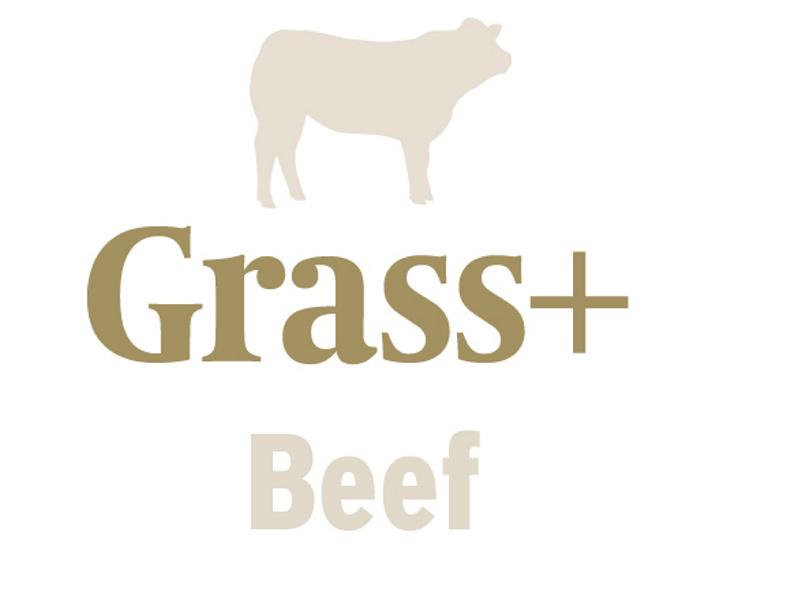With the changeable weather and lack of sunlight in the last week, grass growth is back around 26% to 67kg DM/ha/day. Indeed, ground conditions have deteriorated rapidly in places after bursts of ferocious rain – particularly in the eastern half of the country. Barely a month ago most were looking for rain and this time last year many were in the midst of drought conditions.
While the forecasters have been off the ball at times in recent weeks, they have predicted dry, warm conditions this weekend. Should this transpire, it will help those on wet ground to get grazing back on track and, crucially, finish any outstanding first cuts around the country.
Regarding grazing, those suffering with heavy soils at the moment need to adopt the less is more principle. Firstly, cattle should be getting turned into smaller grazing sections and moved on more often. How long in a paddock? The shorter the better. That said, we don’t want to be leaving grass behind us. We want cattle turning into 8cm to 10cm and leaving 4cm to 5cm behind them. In dry conditions, the target is three days in a plot. During wet weather, this can shorten, particularly in wetter farms. While we can get away with eating the odd heavy cover in dry conditions, they will only spell trouble in wet weather. Already unpalatable (stemmy) grass will dirty quickly, leaving cattle unsettled and active – blackening paddocks.
Take the opportunity to do fieldwork too this weekend, if you can. Most farms should have removed, or be due to remove, a chunk of surplus bales from the grazing area at this point. If you didn’t get a chance yet, do so at the first possible opportunity. Letting these covers build up is counter-productive. If the rain caught you during your main first cut and you’re worried about its quality and preservation, don’t be – there is a long window left to make rocket fuel silage from your grazing platform. Measuring will give you the peace of mind to stop ground for silage and once this happens, move quickly. Think also about fertiliser this weekend. Many will have stopped spreading with the high growth rates, but grass plants need nutrients. Consider spreading just under a bag of CAN or a compound such as 18-6-12 across the whole farm.


Tullamore Farm, Co Offaly
System: suckler/calf to beef
Soil type: variable
Average cover (kg DM/ha): 760
Grass growth (kg DM/ha/day): 72
We have 12 days’ worth of grass and a stocking rate of 4.22 LU/ha – all outdoors. Wet conditions in the past week have delayed silage cutting on Tullamore Farm. While very-high-digestibility silage isn’t needed for dry suckler cows, we don’t want a pit of wet silage. It looks like there might be a window at the weekend to get it cut. Wet weather has also hampered grazing performance, with cows becoming unsettled before moving on, even when grass is in plentiful supply. Stem has started to come into some swards and these will either be topped or earmarked for silage in the next rotation. Just over 19ha of ground is currently out for reseeding and kale establishment. Seedling docks have started to appear in some of the reseeds and these will be sprayed at the earliest opportunity with Legumex DB, a clover-safe herbicide. All calves were faecal sampled on Monday and all samples returned clear. Our vet has advised us to monitor this on a fortnightly basis.

Co Monaghan
System: suckler to bull beef
Soil type: heavy drumlin
Average cover (kg DM/ha): 1,190
Grass growth (kg DM/ha/day): 87
The last few weeks of wet weather have left ground conditions difficult and, as a result, grass utilisation has reduced. Grass is in good supply on the farm at present and hopefully, with weather conditions forecast to improve, things should be OK on the supply front. I have some of my first cut done and hope to get the remainder of it out of the way this week. I have removed a number of paddocks as bales and have more stopped for bales, which will be coming back into the rotation in a few weeks. Some of the 2016-born bulls have been slaughtered already and I hope to pick a few more out to go this week if they are fit. I am carrying out a mini trial with these bulls in that half are being finished on solely concentrates and half on zero-grazed grass and a modest amount of concentrates. The latter group will be moved from 3kg to 5kg of meals with their grass in the coming week – the comparison should be interesting.

Co Limerick
System: suckler to weanling
Soil type: mixed
Average cover (kg DM/ha): 1,093
Grass growth (kg DM/ha/day): 46
I managed to get most of my first cut in before the weather broke. I have changed to all baled silage this year and will aim for quality rather than quantity. I am mowing, tedding and hauling in bales myself so this will cut costs. We received over 3in of rain here in a matter of days, which has saturated any heavy land. Some of the remaining silage ground is heavy and I need a dry spell before I go at it. I will follow the silage with 25 units of nitrogen to keep sward quality up. I have also imported some pig slurry while my stocking rate is low to improve soil fertility cheaply.
I have purchased 29 Hereford and Angus calves this year to increase output. I have cull cows at grass also that will be sold with no meal once fat. My plan is to cut my meal bill to near zero until I reach the stage where I am finishing stock.

Longford
System: suckler to weanling
Soil type: variable
Average cover (kg DM/ha): 688
Grass growth (kg DM/ha/day): 44
Ground is beginning to get quite soft here in places as a considerable amount of rain has fallen over the last two weeks. I was lucky as I managed to get a newly reseeded ley cut for silage in the last good spell of weather. I also carried out a bit of reseeding four weeks ago and I hope to get a post-emergence spray out on this in two weeks’ time, ground conditions allowing.
I’ve hit the ground running since joining the BETTER farm programme, carrying out a lot of fencing to enable me implement a paddock system. I can already see the benefits of having a rotational grazing system in place and when the weather picks up I’ve a lot of surplus bales to take out. I’m continually working on soil fertility, applying pig slurry on areas low in P and K. I hope to carry out my farm plan over the next two weeks, seeing how best I can increase the output and profitability on my farm.







 This is a subscriber-only article
This is a subscriber-only article











SHARING OPTIONS: